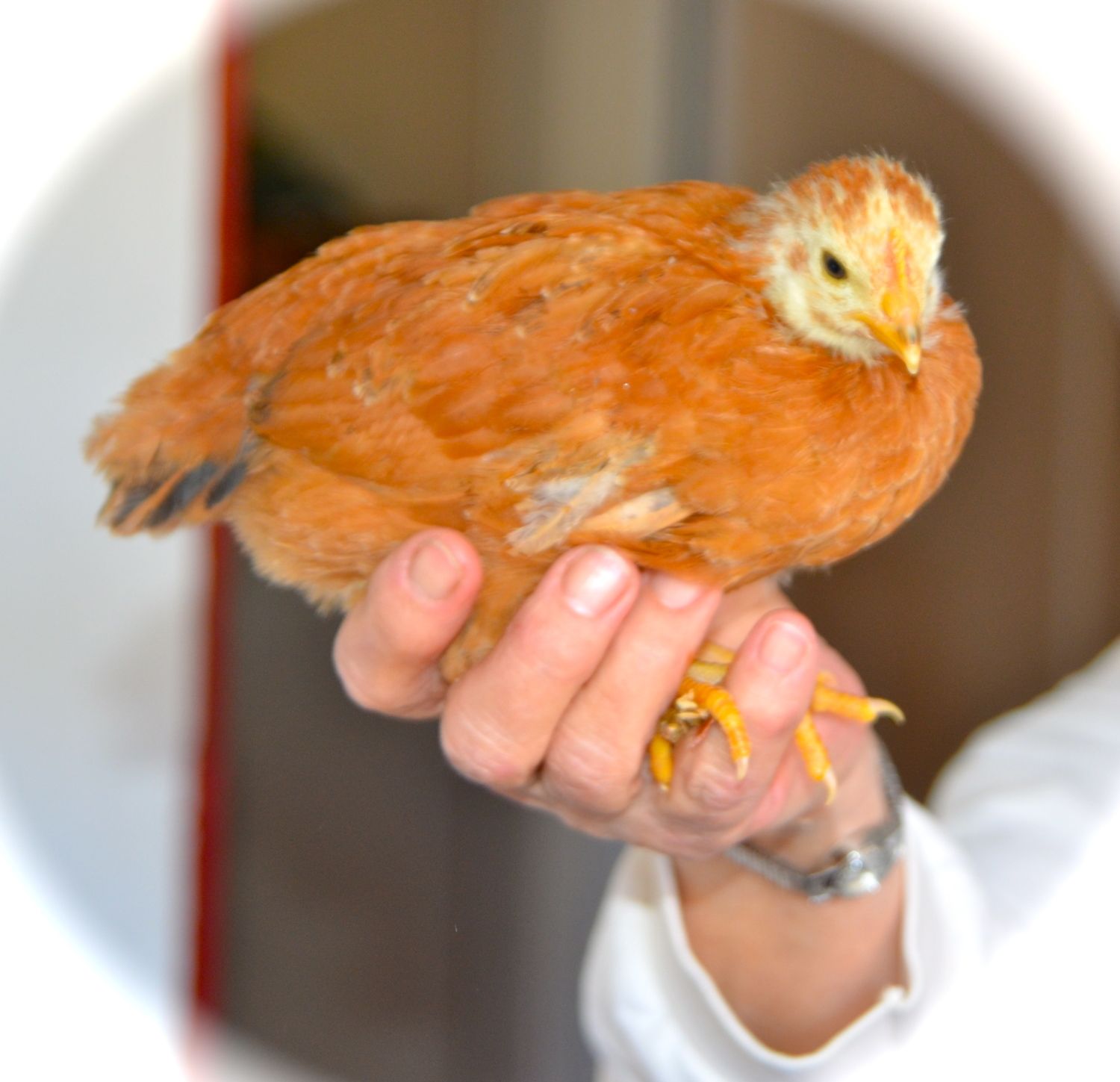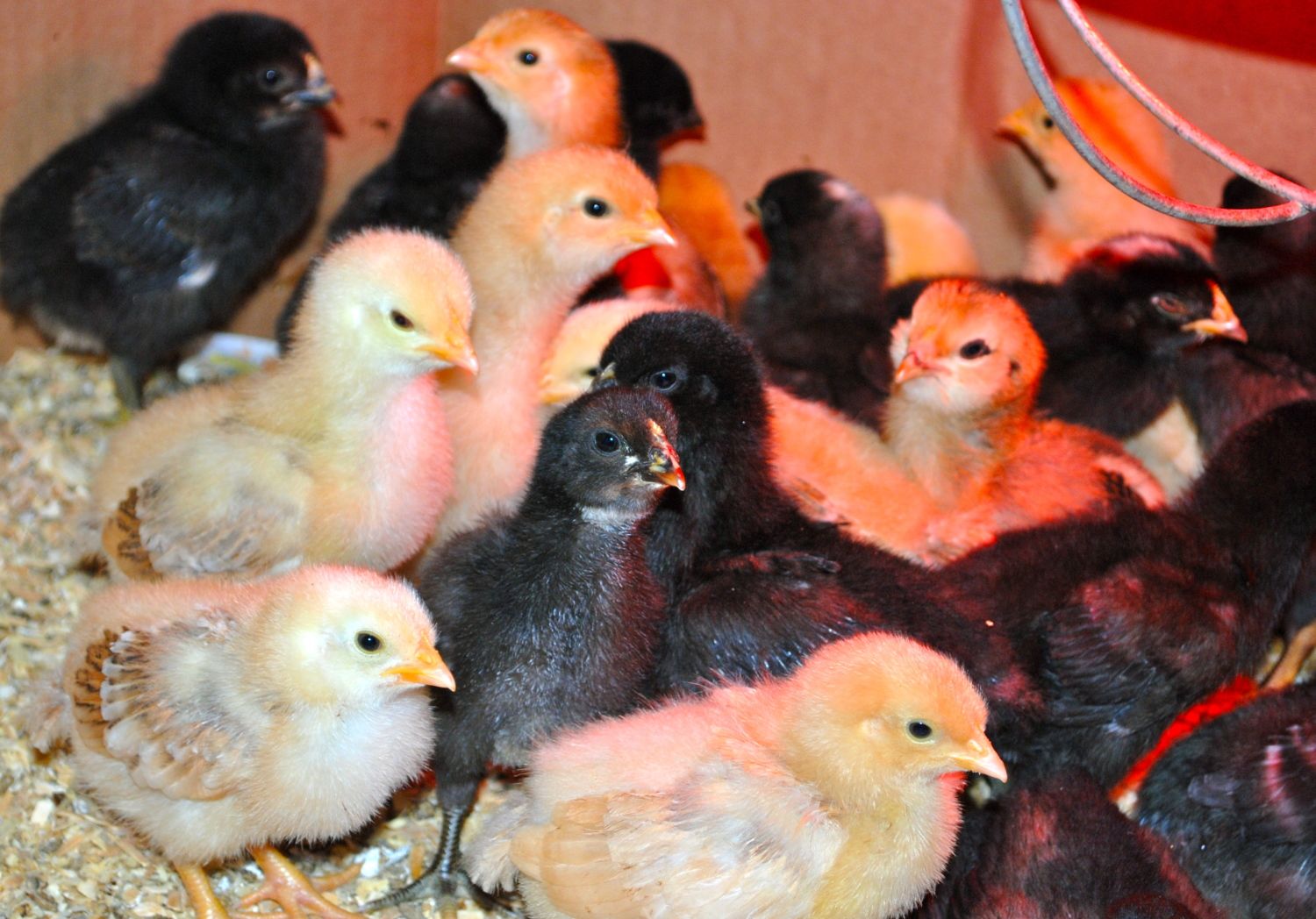
 Describe 'how to become a hero to your local school with a chicken experiment' here
Describe 'how to become a hero to your local school with a chicken experiment' hereBy PAUL A. BARRA
Those of us who raise chickens are not the only ones who can learn from the adventure. In your community there are certainly high school kids who think chicken comes in cellophane packets in the refrigerator section of the supermarket. And eggs in styrofoam cartons.
To help correct this ignorance, this is what I recommend: next time you’re ready to buy hatchlings from McMurray or some other hatchery, talk to the biology teacher at the local secondary school first. She will be happy to discover a new and exciting experiment for her classes - with live specimens the students can actually handle.
You buy the chicks and let the teacher know when they are due. You pick them up at the post office and deliver them to school. This part of the experiment is worth the cost of the birds in itself. The school office staff and administrators will fuss over the chicks and want to touch and hold them and take photos of them. They’ll be cooing and giggling like a grandmother with triplets. It’s hilarious, and the best thing about it is that you’ll find the same reception yet again when you get to the classroom.
The teacher, meanwhile, will have two kiddy pools set up in the biology lab with heat lamps and feeders and waterers. The school should buy the equipment, but you may have to lend it at first. The school will probably agree to buy expandable leg bands with numbers, as well as feed and bedding for the duration of the experiment. This is all very little money and high school science departments should have substantial budgets for expendables.
You may have to show the teacher how to get the babies started. Or not. Life science teachers are used to handling small animals and caring for birds; and they can read the directions from the hatchery.
If you purchase the minimum amount of birds that will ship safely, 25 usually, the teacher will distribute them evenly into the two pens (one gets the exotic breed McMurray sends along for fun, and no one knows which one it is at first. The same applies for a cockerel if you order one for your flock). The teacher assigns each lab team one chick. One pen gets fed Purina Start ‘n Grow, the other the local starter mash. Growth differentials are recorded. Scientifically, it’s kind of a lame experiment but there are tight restrictions on what students are allowed to do with sentient organisms for purposes of experimentation. Your teacher may want to work up some other protocol. The students weigh and measure their chicks every other day or twice a week, depending on how much time the teacher wants to allot to the experiment.
They keep logs; they take temperatures in the pens; they fill feeders, refresh water and change bedding on a rotating schedule; they handle their charges and clean their bottoms when they need it. They learn a lot about animal husbandry on a small scale. And they love it. They will invite their friends in to see the chicks at lunchtime and after class. The school newspaper will send a reporter and photographer around. Parents will want to come and see what all the excitement is about. The teacher’s biology section will suddenly be in demand when students fill out their preference sheets for the next semester. And, the pupils will be learning a lot about responsibility.
After two weeks, cleaning up after the little poop machines gets old. The teacher will not want to feed the chicks over another weekend; the lab begins to get a bit odiferous; and the birds are getting too big for the pools. So you come back on a Friday afternoon and carry the chicks to their permanent home. The grand adventure is over, but I can tell you that kids will come back to visit years after they graduate and want to talk about their chicken experiment in tenth grade.
If you live in the country, the school may opt to buy the chicks themselves and sell them to the community once they’ve grown some. Either way, some teenagers will have a new appreciation of the animals that provide so much sustenance for their families.
